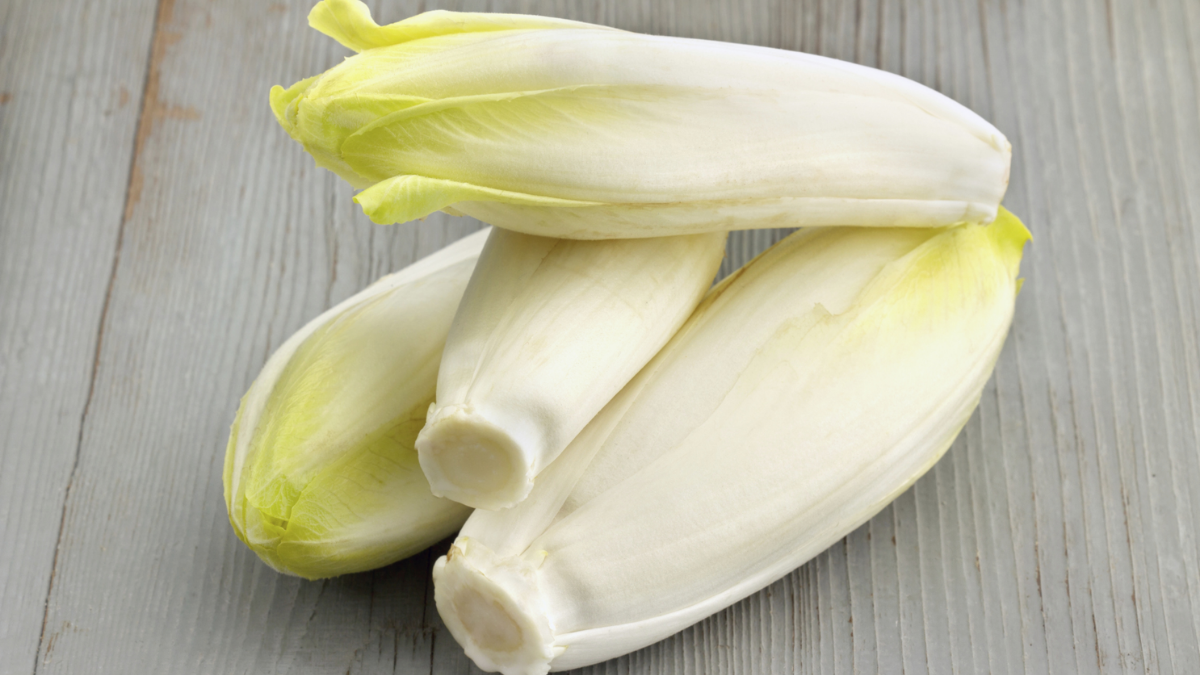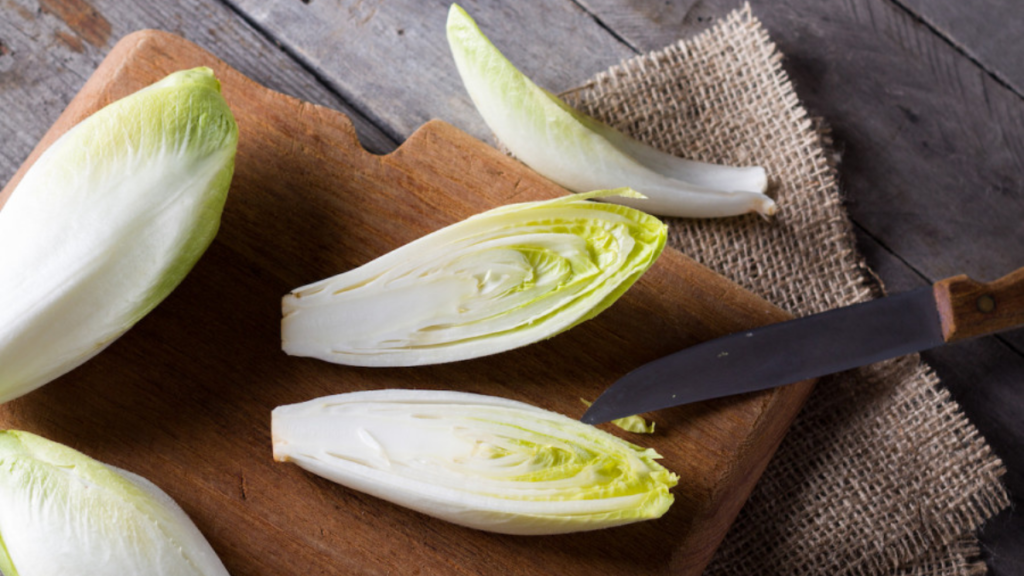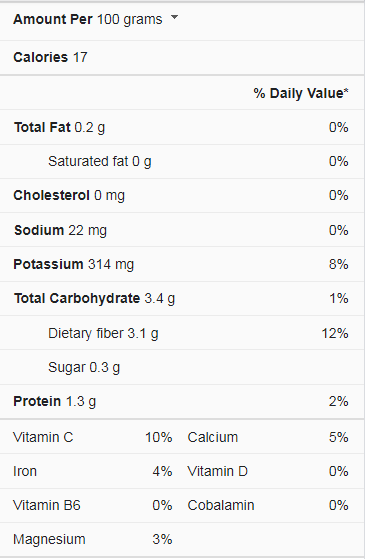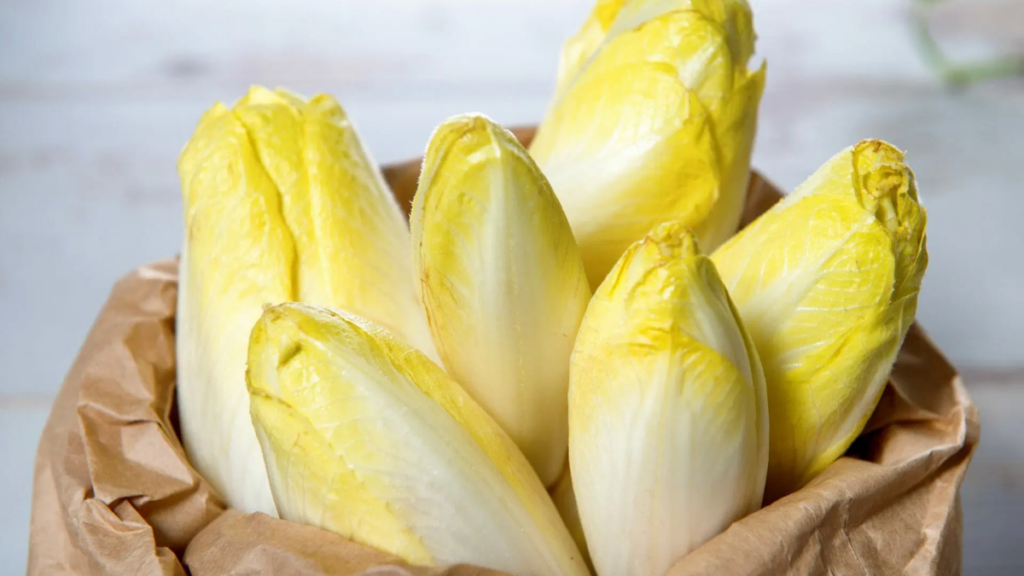Endive is a common vegetable found in most supermarkets across the United States. Unfortunately, it can be intimidating because most people are unsure how to use it and instead opt for more familiar leafy greens like arugula, Romaine, or spinach nutrition. Getting out of your comfort zone and trying this flavorful veggie can provide your diet with a healthy dose of nutrients, flavor, and versatility.
One cup (100g) of raw chopped Endive contains 17 calories, 1.3 grams of protein, 3.4 grams of carbohydrates, and 0.2 grams of fat. Vitamin K, potassium, and folate are all abundant in Endive.
We are all aware that we live in a health-conscious era, in which many people strive to live a healthy lifestyle. Endive, a vegetable with numerous health benefits, is impossible to avoid when discussing health. Even though everyone should be familiar with Endive, many people aren’t.
Endive Nutrition Facts
What is Exactly Endive?
Endive is a chicory-family leafy green that can be eaten raw or cooked. It is a popular salad green in Europe and the United States but native to India. Endive is widely available, and due to its hardiness and ability to be grown in hothouses, it is often available year-round. The plant can also be grown at home if the gardener lives in a temperate climate and has access to a partially sunny area with loose, well-drained soil.
Types
There are mainly three types of Endive:
- Curly Endive: Also known as frisée or chicory, this variety has a bitter flavor and frilly, curly leaves.
- Belgian Endive: This type of endive lettuce, also sometimes called Belgium Endive, features pale yellow leaves that are moderately bitter. Red Endive, or radicchio, is a specific variety with a more reddish hue.
- Broad-leafed Endive: Although this form belongs to the same genus and species as curly Endive, it’s slightly less bitter than the other two varieties. It’s also sometimes called escarole vs. Endive in certain recipes and dishes.
What are the Health Benefits of Endive?
Here are the health benefits of Endive:
Aids in Cancer Prevention
Endive contains kaempferol, a potent flavonoid. Kaempferol has been shown in preliminary but promising studies to inhibit cancers of the breast, brain, liver, colon, prostate, lung, pancreas, and other organs.
Kaempferol reduces inflammation and induces apoptosis (cell death) in tumors while having no negative effects on healthy cells. Eating Endive is a great way to increase your intake of this cancer-fighting compound, which is important because cancer is a difficult health issue.
Promotes Heart Health
Endive is high in potassium, fiber, and folate, which are beneficial to heart health. Potassium is a well-known blood pressure-lowering substance, and Urination helps relieve blood vessel tension and counteracts the effects of high sodium levels in the blood. Fiber helps to improve lipid profiles by binding to cholesterol in the intestines, preventing it from being absorbed, and then excreting it. Endive contains folate, which protects the arteries by metabolizing homocysteine, a compound linked to cardiovascular disease and stroke when blood levels reach dangerously high levels.
Supports Good Vision
Endive is a good source of vitamin A and beta-carotene (a precursor to vitamin A). Vitamin A aids eye health in various ways, from preventing macular degeneration to improving night vision.
Although vitamin A is commonly associated with orange-colored vegetables, it can also be found in leafy greens like Endive. Endive’s vitamin A content can aid immune system function and cell growth and provide support for the heart, lungs, kidneys, and other organs.
Aids Weight Loss
Nothing makes losing weight more difficult than constant hunger. Endive is low in calories but high in fiber, making it a winning combination for weight loss satiety. Fiber also slows digestion, which helps maintain blood sugar and energy levels.
Because of the high fiber and water content of Endive, you can eat more food without gaining weight. Increasing fiber intake through Endive and other plant foods is a simple change that can help you lose weight.
Supports a Healthy Pregnancy
Endive provides several essential nutrients for a healthy pregnancy. For example, its folate content helps reduce the risk of congenital disabilities such as neural tube defects, congenital heart disease, and preterm birth. Vitamin A, choline, iron, and calcium are all important for pregnant women, and all of these nutrients are found in Endive. Although Endive is not a substitute for prenatal vitamins, it is an excellent addition to a pregnancy-friendly diet.
Adverse Effects
Endive is high in vitamin K, just like other leafy greens. Vitamin K helps prevent excessive bleeding after an injury by improving blood clotting. However, if you take blood thinners like Coumadin (warfarin), this vitamin may interfere with your medication’s anticoagulant effects.
Maintaining a consistent intake of leafy greens while on anticoagulants can assist your doctor in prescribing the proper medication dosage based on your usual eating habits. Consult your doctor, a registered dietitian, or a nutritionist to figure out how endives fit into your diet.
Allergies to leafy greens such as Endive are uncommon, but they exist. Carrot, peach, cherry, sycamore pollen, mugwort, and ragweed allergies are sometimes linked to this allergy. If you have symptoms like chest tightness, hives, a weak pulse, or swelling after eating Endive, see an allergist to talk about your concerns.
Where to Find and How to Use it?
This vegetable can be found in the produce section of most supermarkets, usually alongside other specialty greens. If you can’t find it in a store near you, it’s also available at many farmers’ markets. There are various ways to incorporate this leafy green into your weekly meal plan. Cutting it into strips and mixing it into your favorite endive salad recipes is one of the most popular uses.
You can also use it as an endive substitute by substituting other leafy greens like spinach or arugula. Other varieties can be substituted, though your recipes’ final taste and texture may be slightly altered.
Endive can also be cooked in a variety of ways. In your favorite Belgian endive recipes, try sautéed, braised, baked, or roasted Endive. You can also use it as a simple, endive appetizer by substituting it for crackers and serving it with a dip. Alternatively, add it to ceviche, soups, or stir-fries to boost the nutritional value of your meal.
When it’s Best?
Many endive varieties reach maturity in the fall. Some are, however, planted in the spring. This, along with blanching the heads before harvesting—which many gardeners do—tends to temper Endive’s bitter flavor when grown in cooler temperatures. Buy Endive locally or grow it in your garden for the freshest harvest. Look for bright greenish, whitish, or yellowish crisp leaves when buying Endive at the store or farmer’s market. Browning or wilting endive should be avoided.
Storage and Food Safety
Endive can be used in salads and mixed with other greens. Endive can also make finger-friendly appetizers by using each leaf as a “boat” to hold ingredients such as cheese, avocado, or seafood.
Dip endive leaves in your favorite creamy dips, guacamole, or salsa for a nutrient-dense snack. You can also roast the endive leaves in the oven to reduce the bitterness and bring out the nutty flavor. Endive should always be kept refrigerated. Before eating, rinse it in cold water and pat it dries with a towel.
Endive can be stored in the refrigerator for up to two weeks. However, if at all possible, use it within a few days. Wilted or slimy leaves indicate that the Endive has gone bad and should be discarded.
Conclusion
Although allergies to leafy greens like Endive are rare, they do exist. This allergy is sometimes linked to carrot, peach, cherry, sycamore pollen, mugwort, and ragweed allergies. Consult an allergist if you experience chest tightness, hives, a weak pulse, or swelling after eating Endive. Each variety has its distinct flavor, texture, appearance, and how it can be used in various recipes. Vitamin K, vitamin A, folate, and fiber are abundant in this leafy green vegetable. It’s also been linked to many health benefits, including better digestion, stronger bones, improved liver function, and weight loss. It can also be eaten raw in salads or cooked in various dishes such as soups, stir-fries, and appetizers.
It’s also simple to replace other greens in your favorite dishes, such as spinach or arugula, to add a boost of nutrients, flavor, and health benefits.



